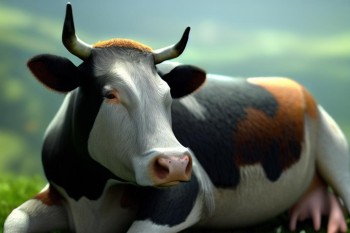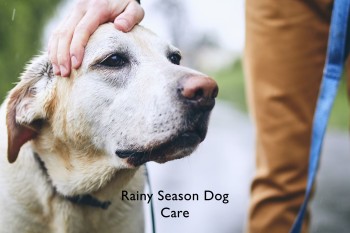🦠💉 Septic Arthritis: Understanding the
Painful Joint Condition in Cattle! 💔🐄
Septic arthritis is a condition
characterized by inflammation and infection of the joints in cattle. While it
commonly affects calves, it can also occur sporadically in older cattle. The
infection is caused by various organisms and is usually a result of primary
endogenous (internal) or exogenous (external) sources of infection.
🔬 Etiology:
In young calves, septic arthritis
can arise from:
- Umbilical infections or
septicemia: Bacteria can enter the bloodstream through the infected umbilicus,
leading to joint infection.
- Calves with failure of passive
transfer of immunoglobulins: Insufficient transfer of antibodies from the dam
to the calf can weaken the immune system, making them more susceptible to
infections, including septic arthritis.
- Neonatal septicemic calves with
septic arthritis or osteomyelitis: Infections that spread through the
bloodstream can reach the joints and cause inflammation.
- Other predisposing factors:
Conditions such as enteritis (intestinal inflammation), meningitis
(inflammation of the membranes surrounding the brain and spinal cord), uveitis
(eye inflammation), or pneumonia can weaken the immune system and increase the
risk of septic arthritis.
- Exogenous factors: Abrasions,
wounds, and decubital ulcers (pressure sores) can provide entry points for
bacteria into the joints.
- Prolonged recumbency: Calves
that remain in a recumbent position for extended periods are more susceptible
to joint infections.
- Bacterial pathogens: Common
organisms involved in septic arthritis in young calves include Escherichia
coli, Salmonella species, and Arcanobacter pyogenes.
In older calves (more than 3
weeks) and heifers, septic arthritis can be caused by:
- Exogenous wounds, periarticular
cellulitis, and punctures: Injuries around the joints can introduce bacteria
and lead to joint infection.
- Endogenous circulation of
pathogens: Bacteria from the intestinal tract (such as Salmonella species) or
respiratory tract (such as Histophilus somni and Mycoplasma species) can enter
the bloodstream and infect the joints.
- Mycoplasma arthritis: This type
of arthritis is common in growing calves aged 3 to 6 months.
- Uncomplicated trauma: Trauma to
the carpus (wrist) can cause bruising, which may lead to joint infection.
In adult cattle, septic arthritis
can occur due to:
- Secondary to endogenous
diseases: Conditions like endocarditis (inflammation of the heart valves),
septic mastitis (bacterial infection of the mammary gland), pneumonia, lung
abscesses, liver abscesses, and chronic foot infections can spread bacteria
through the bloodstream, leading to joint infection.
- Exogenous infections: Traumatic
wounds, decubital sores (pressure ulcers), and periarticular cellulitis
(inflammation around the joints) or abscess formation can introduce bacteria to
the joints.
- Bacterial pathogens: Pyogenic
bacteria (e.g., Staphylococcus species) and Mycoplasma species can be involved
in septic arthritis in adult cattle.
🚩 Signs and Symptoms:
- Marked lameness: Affected
cattle may exhibit severe lameness, often favoring the affected limb.
- Joint distention and warmth:
Swelling and increased temperature may be observed around the infected joint.
- Pain and discomfort: Cattle
with septic arthritis experience pain when the joint is manipulated, flexed, or
extended.
- Fever: Elevated body
temperature (ranging from 103.0 to 104.0°F or 39.4 to 40.0°C) is common in
cattle with septic arthritis.
- Abnormal posture and lying
patterns: Affected animals may show an abnormal attitude while in recumbency
and lie with the affected limb extended.
- Lateral recumbency: Cattle may
lie in lateral recumbency to extend the affected limb more easily, relieving
some discomfort.
🔍 Diagnosis:
To diagnose septic arthritis,
veterinarians consider various factors:
- Clinical history: Information
regarding umbilical infections, septicemia, or any external source of infection
is crucial for assessing the potential causes.
- Radiographs: X-rays may be
taken to evaluate the joint and surrounding structures for any signs of
infection or damage.
- Ultrasonography: This imaging
technique can provide detailed information about the joint's condition,
including the presence of fluid, inflammation, or other abnormalities.
- Synovial fluid analysis:
Collecting synovial fluid from the affected joint through a process called
arthrocentesis allows for cytology (cellular examination) and culture
(microbial identification). In acute cases, subtle lesions in the joint may be
more apparent through synovial fluid analysis. In chronic septic arthritis, the
synovial fluid may be grossly purulent (filled with pus).
- Visual inspection of synovial
fluid: The appearance and odor of the synovial fluid can give important clues
about the presence of infection. For example, mycoplasmal tendonitis/synovitis
often presents with caseous (cheese-like) purulent fluid, while A. pyogenes
infection has a characteristic odor of sepsis.
⚖️ Prognosis:
The prognosis for septic
arthritis in neonatal calves is generally poor. Acutely infected joints have a
better prognosis compared to chronically infected joints that contain thick
purulent debris.
💊 Treatment:
The treatment of septic arthritis
in cattle involves multiple approaches:
- Joint
lavage: Surgically preparing the infected joint and flushing it
thoroughly using a solution like buffered lactated Ringer's or normal saline.
This helps to remove causative organisms, fibrin, white blood cells, and
inflammatory mediators from the joint.
-
Systemic antibiotics: Administering appropriate systemic antibiotics
based on culture sensitivity testing is crucial for combating the infection.
Antibiotics such as florfenicol and ceftiofur are commonly used in the treatment
of septic arthritis. Systemic antibiotics are more effective than injecting
antibiotics directly into the joint or adding them to the lavage solution.
- Repeat
joint lavage: The joint lavage procedure may be repeated daily or as
needed (typically for 1 to 3 days) to ensure thorough cleaning and removal of
infectious material.
-
Supportive care and management: Keeping the affected cattle in a dry and
well-bedded stall helps in maintaining a clean environment and reducing stress
on the joint.
- Surgical
intervention: In advanced cases where joint lavage alone is ineffective,
surgical intervention such as arthrotomy (opening of the joint) may be
necessary. This allows for further cleaning and drainage of thick purulent
joint fluid.
-
Physical therapy: Implementing physical therapy, including exercises and
passive joint movement, can help prevent tendon contracture and promote joint
mobility and healing.
-
Treatment of underlying conditions: Addressing any underlying diseases
or sites of infection, such as endocarditis, pneumonia, or wounds, is essential
for comprehensive treatment.
-
Extended systemic antibiotic therapy: Appropriate systemic antibiotics
should be continued for a minimum of 2 weeks to ensure eradication of the
infection.
-
Additional measures: Depending on the severity of the case, other
supportive measures, such as blood or plasma transfusions, correction of
umbilical infections, and physical therapy to prevent tendon contracture, may
be necessary.
💪 By understanding the causes, recognizing the
signs, and following
proper treatment protocols, we
can improve the prognosis and alleviate pain for cattle suffering from septic
arthritis. Stay informed, work closely with a veterinarian, and provide the
necessary care to ensure the well-being of these animals. 🐮💙
📝 Disclaimer: This blog
post provides general information and should not replace professional
veterinary advice. Always consult with a qualified veterinarian for accurate
diagnosis, tailored treatment plans, and personalized care for your livestock.

















